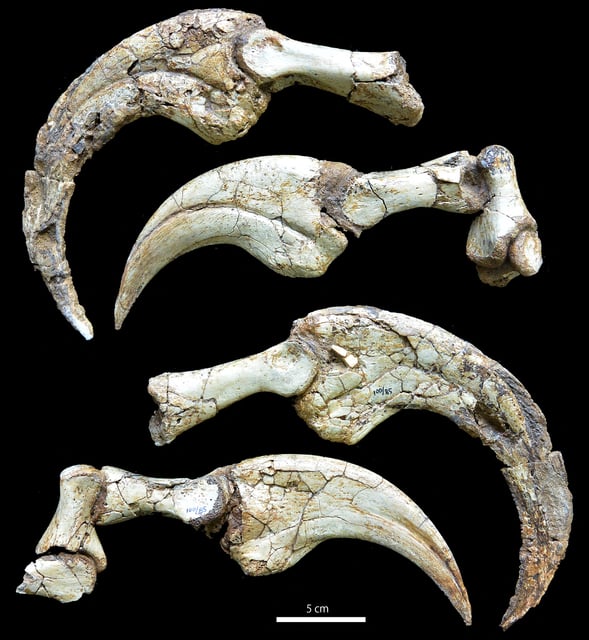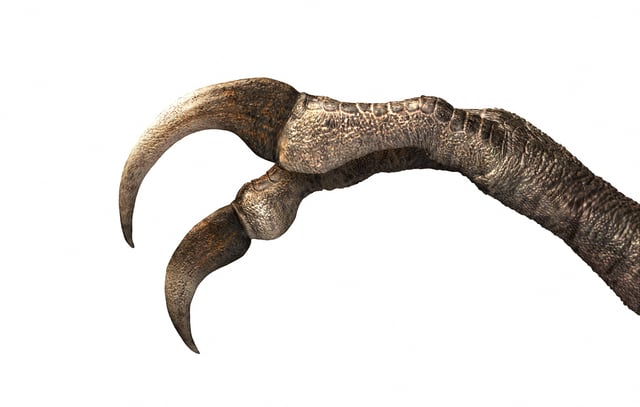Overview
- Duonychus tsogtbaatari, a 10-foot-long therizinosaur, was identified from fossils found in Mongolia's Gobi Desert.
- The species is notable for its two-fingered hands, a rare adaptation among therizinosaurs, which typically had three fingers.
- A keratin sheath preserved on one claw, a rare fossilization feature, extended the claw's length by over 40%.
- Researchers suggest the claws were used for grasping vegetation, defense, and possibly display or species recognition.
- This discovery contributes to the study of digit reduction, as Duonychus is one of five theropod lineages to evolve two-fingered hands.



